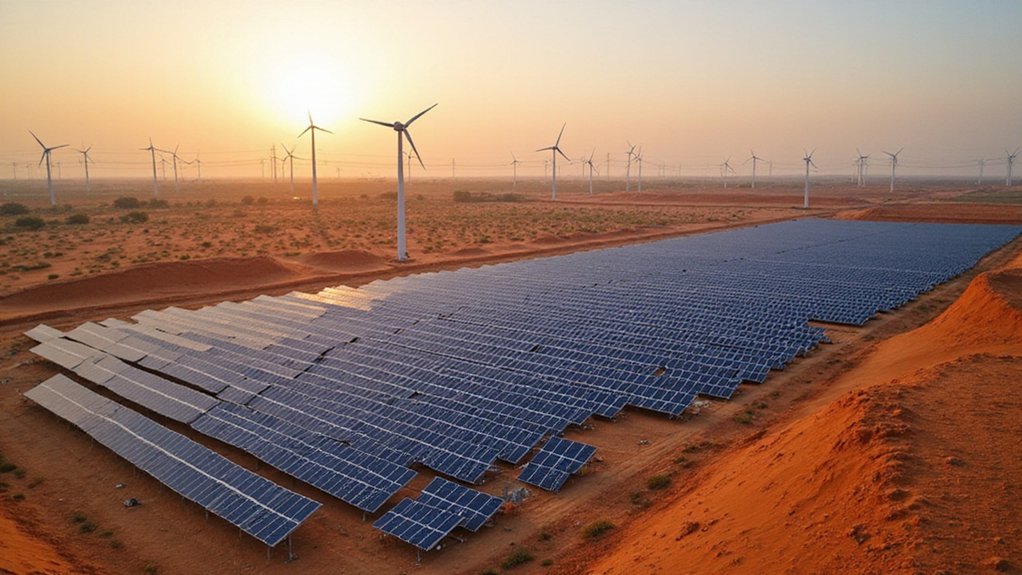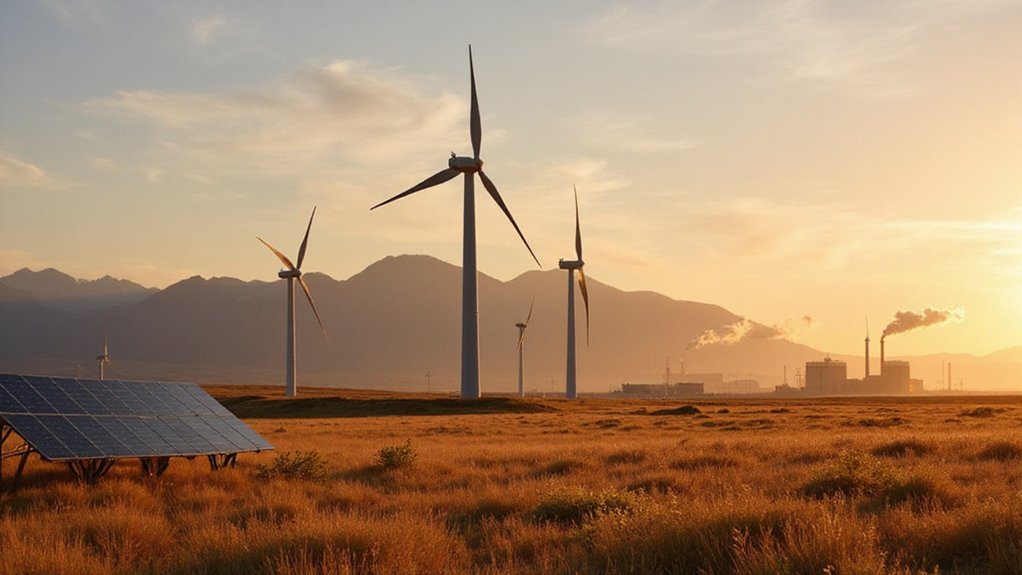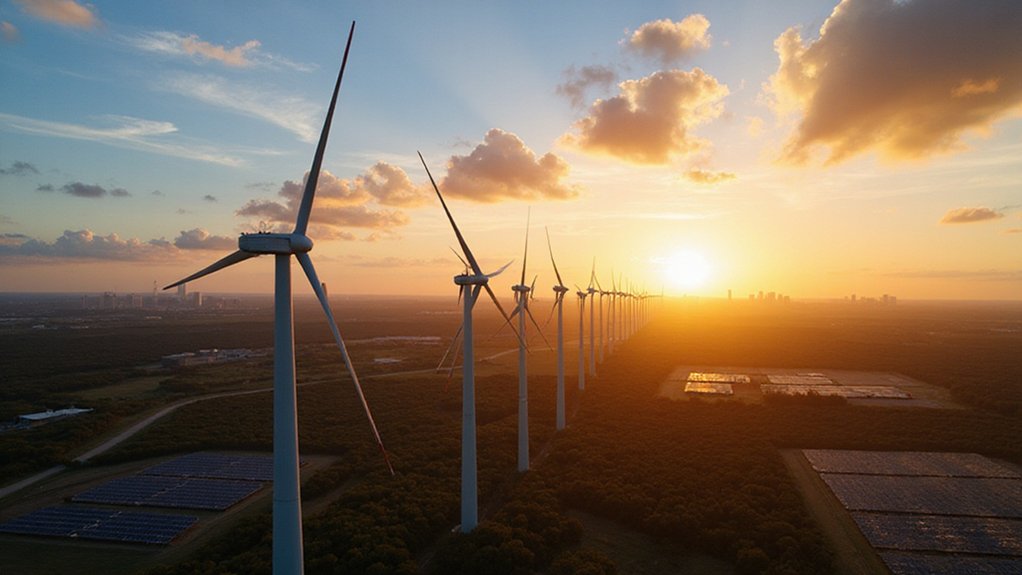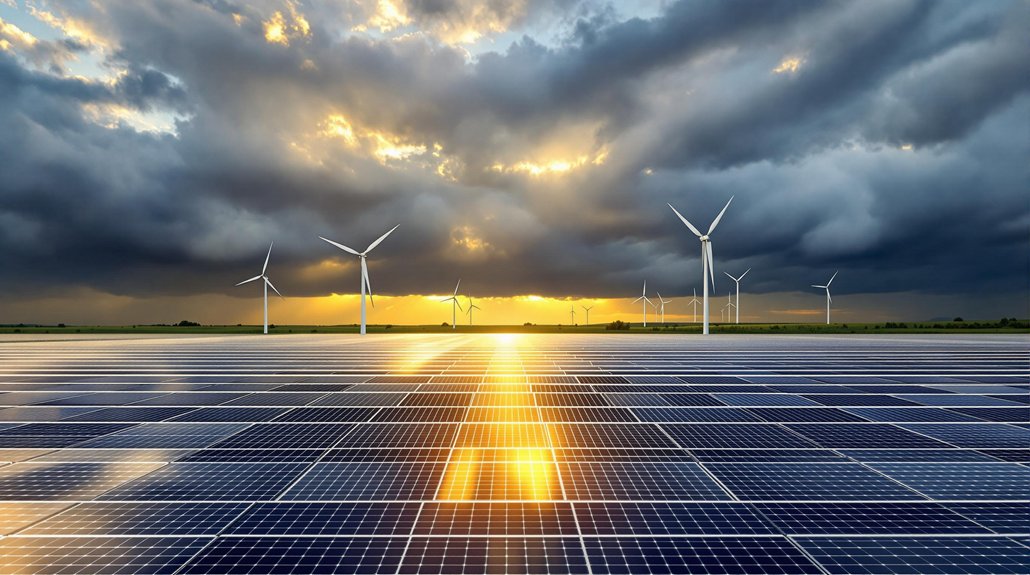A milestone has transformed India’s energy terrain. The country’s renewable energy capacity has reached 220.10 gigawatts (GW) as of March 31, 2025, making up over 46.3% of its total electricity generation capacity of 452.69 GW.
This remarkable growth shows India’s renewable capacity has grown at an annual rate of 15.4% from 2016 to 2023. The nation added a record 29.52 GW of renewable energy in fiscal year 2024-2025 alone. That’s more power than many countries generate in total.
India added a record 29.52 GW of renewable energy in fiscal year 2024-2025 alone
Solar energy leads the charge with 105.65 GW of installed capacity. Ground-mounted solar projects account for 81.01 GW, while rooftop systems contribute 17.02 GW. The country added 24 GW of new solar capacity in the last fiscal year, up from 15.03 GW the previous year. India now ranks fifth globally in solar power capacity, according to the International Renewable Energy Agency. Off-grid solar systems have also expanded significantly, adding 4.7 GW to the nation’s solar portfolio.
Wind power isn’t far behind. India’s wind capacity has reached 50 GW, with 4.15 GW added in fiscal year 2024-2025. The country ranks fourth globally in wind power capacity. Wind corridors across the nation support this expansion.
Other renewable sources are growing too. Biomass capacity increased by almost 12 GW in the last fiscal year. Small hydro projects have grown to 5.1 GW, while large hydroelectric facilities contribute 46.93 GW. New hybrid energy systems combine different renewable sources and already provide 2.87 GW from solar components.
The pipeline looks even more impressive. India has 169 GW of renewable projects under implementation and another 65 GW already tendered. The government has set an ambitious target of reaching 500 GW of non-fossil fuel energy capacity by 2030. This push toward renewables aligns with the country’s climate justice principle that developing nations deserve space to grow while addressing environmental concerns.
The Ministry of New and Renewable Energy oversees this evolution, while the Central Electricity Authority monitors progress. Government incentives like tax rebates and subsidies support these projects. India plans to invest $109.50 billion to upgrade power infrastructure and meet projected demand of 458 GW by 2032.
India’s geographical diversity and abundant natural resources provide ideal conditions for renewable energy generation. This rapid expansion positions India as a global leader in the shift away from fossil fuels. The numbers tell a clear story of transformation that’s reshaping the nation’s energy future.
References
- https://www.enerdata.net/publications/daily-energy-news/india-reached-220-gw-new-renewable-energy-capacity-2024-2025.html
- https://www.mospi.gov.in/sites/default/files/publication_reports/Energy_Statistics_2025/Energy Statistics India 2025_27032025.pdf
- https://mnre.gov.in/en/physical-progress/
- https://www.gulftoday.ae/opinion/2025/04/22/india-achieves-record-renewable-energy-capacity
- https://www.tatapower.com/blogs/renewable-energy-trends-in-2025









